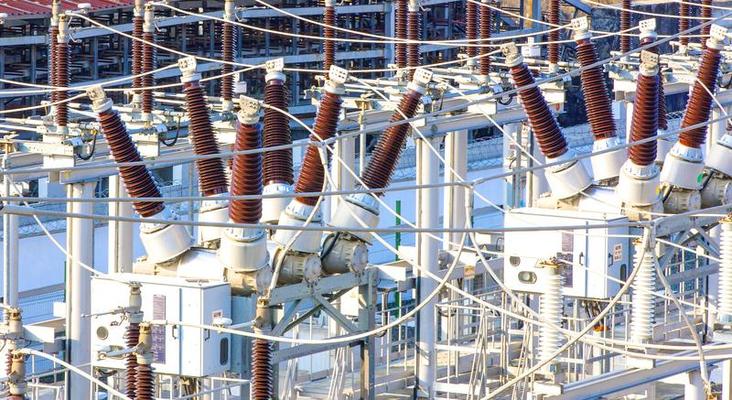Self-generation eclipses central supply in Nigeria’s commercial capital, raising alarm over systemic failures and urgent need for investment
Lagos State, Nigeria’s economic nerve centre, is now generating more power off-grid than the entire country’s national electricity grid, according to a newly released infrastructure report by the Africa Finance Corporation (AFC). The revelation throws into sharp relief the growing disconnects between energy demand and supply in Africa’s most populous nation.
The State of Africa’s Infrastructure Report 2025, obtained on Monday, describes a continent facing a deepening energy access crisis. While global development institutions aim to connect 300 million sub-Saharan Africans to electricity by 2030, the report warns that current trajectories may leave access levels virtually unchanged.
In Lagos alone, off-grid power generation is estimated to exceed 19 gigawatts (GW) a staggering figure compared to the national grid, which struggles to consistently deliver between 4 and 5 GW. The findings underscore a broader continental trend: Africa’s largest economies are increasingly powered not by central utilities but by private, embedded, and self-contained energy systems.
A Continent Powering Itself, But at a Cost
The AFC highlights the paradox of this “off-grid boom.” On one hand, it demonstrates market adaptability and private sector resilience; on the other, it reflects institutional failure and the erosion of public infrastructure.
“In Nigeria and South Africa, a growing share of electricity is now generated outside central grids,” the report notes. “From households relying on petrol generators to industrial clusters building their own gas-fired plants, the shift is accelerating and so is its cost.”
This decentralised growth is not limited to Lagos. Across Nigeria, erratic public supply has pushed homes and businesses into energy self-sufficiency. Among large industrial users, captive power plants on-site facilities often powered by diesel or gas—have become the norm. These installations range in capacity from 20 MW to over 200 MW, particularly in energy-intensive sectors such as cement, mining, and manufacturing.
South Africa tells a similar story. A 2022 policy reform lifting licensing restrictions on embedded generation triggered a surge in private investment. Installed capacity jumped from just 23 MW in 2019 to 4.5 GW by 2023, with over 1 GW of solar power added in 2024 alone.
A Symptom of Systemic Failure, Not Progress
While the numbers may suggest progress, the AFC report offers a sobering perspective: the widespread turn to self-generation is not a sign of prosperity but of desperation.
“Going off-grid is rarely a low-cost solution,” it states. “It is a last resort.” A 2019 study by the Energy for Growth Hub found that self-generated power in Nigeria and South Africa costs twice as much as grid electricity and up to four times more in Ethiopia. The economic implications are profound: higher production costs, reduced industrial competitiveness, and increased reliance on fossil fuels.
Moreover, official energy statistics fail to fully capture the extent of the transformation. International databases often focus on solar installations popular among residential and commercial users but thermal generation from diesel and gas remains the dominant form of self-generation, particularly in heavy industry.

Africa’s ‘Low-Energy Trap’ and the Risk of Stagnation
The report paints a stark picture of Africa’s energy trajectory. From 2013 to 2023, electricity generation across the continent grew by less than 2% annually, far below the 2.42% population growth rate and 3% economic growth rate. For the first time in two decades, per capita electricity consumption is declining, indicating not just stagnation, but regression.
In 2024, Africa added just 6.5 GW of utility-scale power a third of India’s additions and dwarfed by the 48.6 GW deployed in the United States. Without radical acceleration, the report warns, Africa risks being trapped in a “low-energy equilibrium” a state where electricity connection rates improve, but the quality, quantity, and reliability of power remain inadequate for economic transformation.
This energy paradox is particularly painful given Africa’s vast untapped resources. The continent boasts the world’s largest undeveloped hydropower reserves, significant geothermal potential, and receives among the highest levels of solar irradiation globally.
Yet these resources remain largely stranded hemmed in by poor infrastructure, limited investment, and inconsistent policy frameworks. “Abundance has become a constraint,” the AFC report concludes.
The roadmap out of the current impasse is clear but politically and financially demanding massive investment in grid infrastructure, targeted policy reforms, and a renewed commitment to regional energy integration. Without this, energy self-sufficiency will remain the domain of the privileged and the powerful, while the broader economy continues to suffer under the weight of unreliable supply.
As urbanisation and industrial demand intensify across the continent, the choices before African governments have never been more urgent or more binary.
Either scale up and modernise public energy infrastructure or continue down a path of fragmented, unequal, and expensive self-generation that hampers economic growth.
“Self-generation may keep the lights on,” the report notes, “but it cannot power a continent’s future.”



